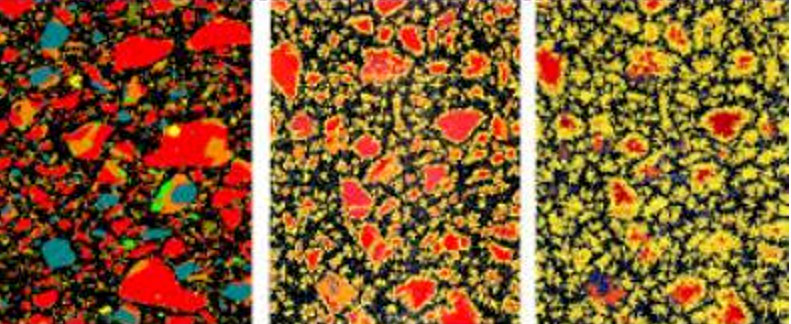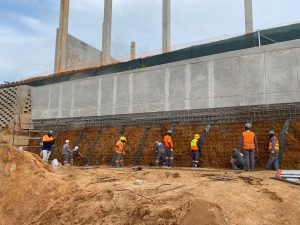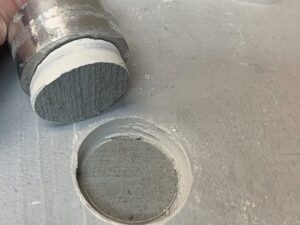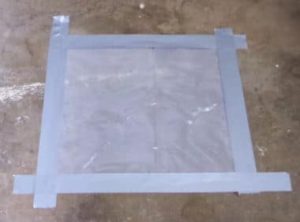By Carl White
The microstructure of cement paste as it hydrates. Notice the growth of C-S-H on the cement minerals over time. The blue is C2S, the red is C3S, black is pore space and yellow is C-S-H.
Colloidal silica post-placement pozzolan technology works with the hydration process in cement to maximise concrete performance.
Hydration is the chemical reaction between cement and water. This process involves five stages. The first stage occurs when dissolution is initiated during concrete mixing. This is when water and cement are introduced either by themselves or within the Portland cement concrete mix. The surface of the cement particle changes and is covered in an early calcium silicate hydrate (C-S-H) gel material. As the cement changes and dissolves, it releases calcium ions in the water, creating pore solution.
The second stage or induction period begins after this initial reaction. At this stage, very little heat is released, and calcium ions are produced at an increased rate.
The concrete remains fluid and workable during placement. This period usually lasts about two hours. Eventually, the concentrations increase to the point that the pore solution is supersaturated. In other words, it is energetically favourable for some of the ions to combine into new solid phases as opposed to remaining dissolved.
Now, the third stage, namely the rapid reaction period, begins.
Colloidal silica applied
Colloidal silica post-placement pozzolan technology is applied at the end of the third stage of the hydration process.
The third stage typically occurs about two hours after cement is introduced to water and usually takes about six hours, varying according to many factors. These include, among others, the concrete mix design and ambient weather conditions. During this stage, hydration products start to nucleate and grow. Primarily calcium hydroxide and C-S-H, they differ to the starting cement minerals. These included tricalcium oxy silicate; acetylene sulphide; tricalcium aluminate; and calcium aluminoferrite.
Colloidal silica enters concrete
After reaching final set, colloidal silica post-placement pozzolan enters the concrete through capillary pores previously occupied by water. The completely hydrated cement paste consists of between 50% and 60% C-S-H and between 15% and 25% methyl group. The colloidal silica in SCP technology reacts with excess Calcium Hydroxide to create more C-S-H in the concrete. This is the main hydration product responsible for giving concrete its strength. The accessible capillaries and pores are permanently filled. This seals the concrete and locks in the remaining moisture. By maintaining moisture in the concrete, the hydration process is extended as long as temperature is controlled.
| Cement Notation | Actual Formula | Name | Mineral Phase | Primary Function |
| C2S | 2CaO · SiO2 | Dicalcium Silicate | Belite | Strength Beyond 7 Days |
| C3A | 3CaO · Al2O3 | Tricalcium Aluminate | Aluminate | Early Strength Development |
| C4AF | 4CaO · Al2O3 · Fe2O3 | Tetracalcium Aluminoferrite | Ferrite | Controls Early Setting, Gives Gray Color |






